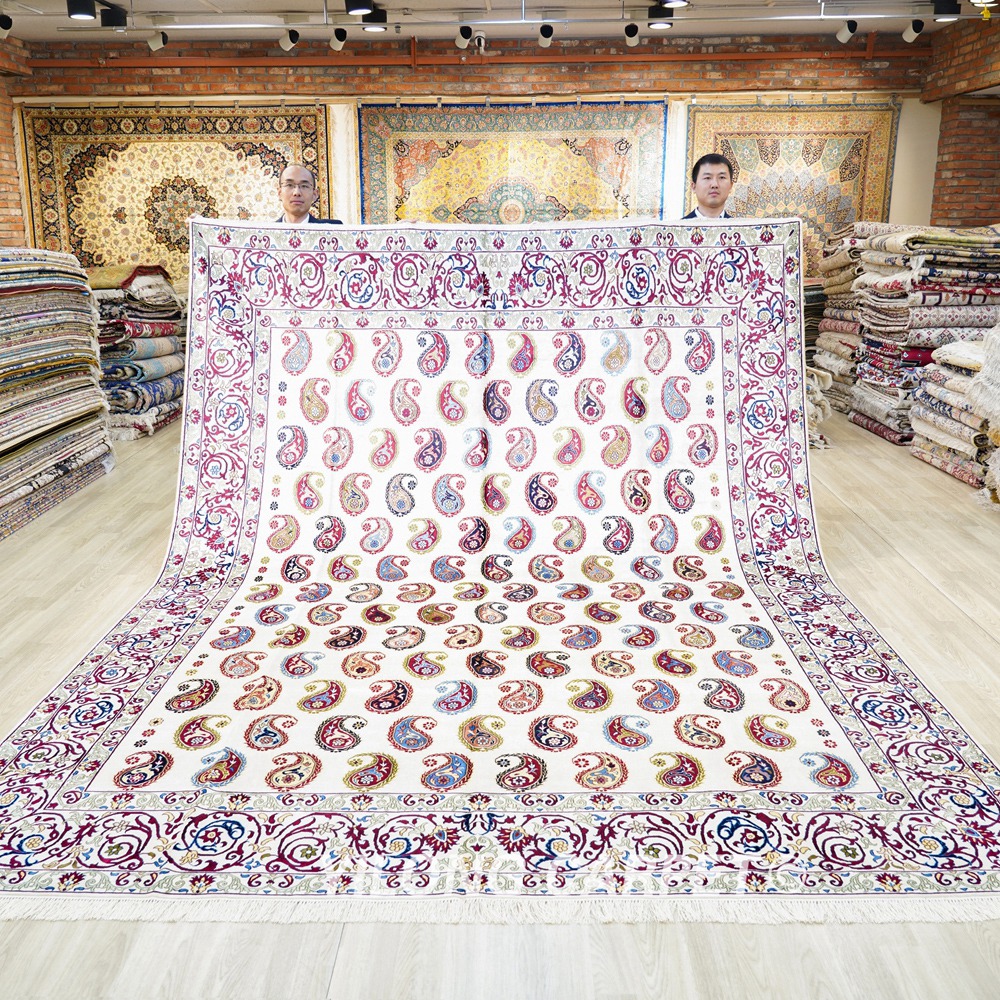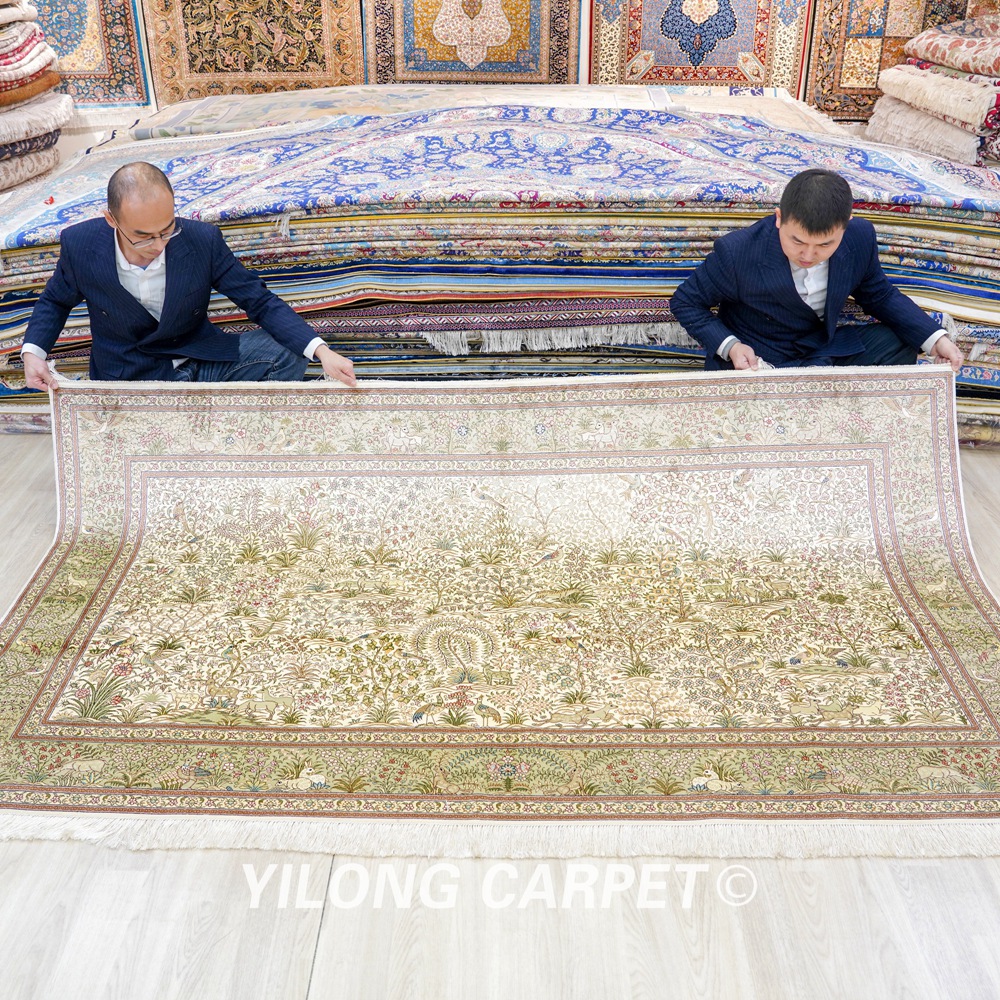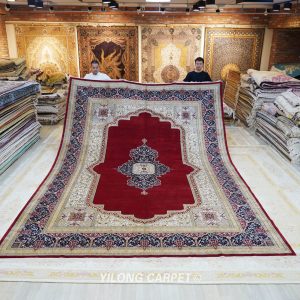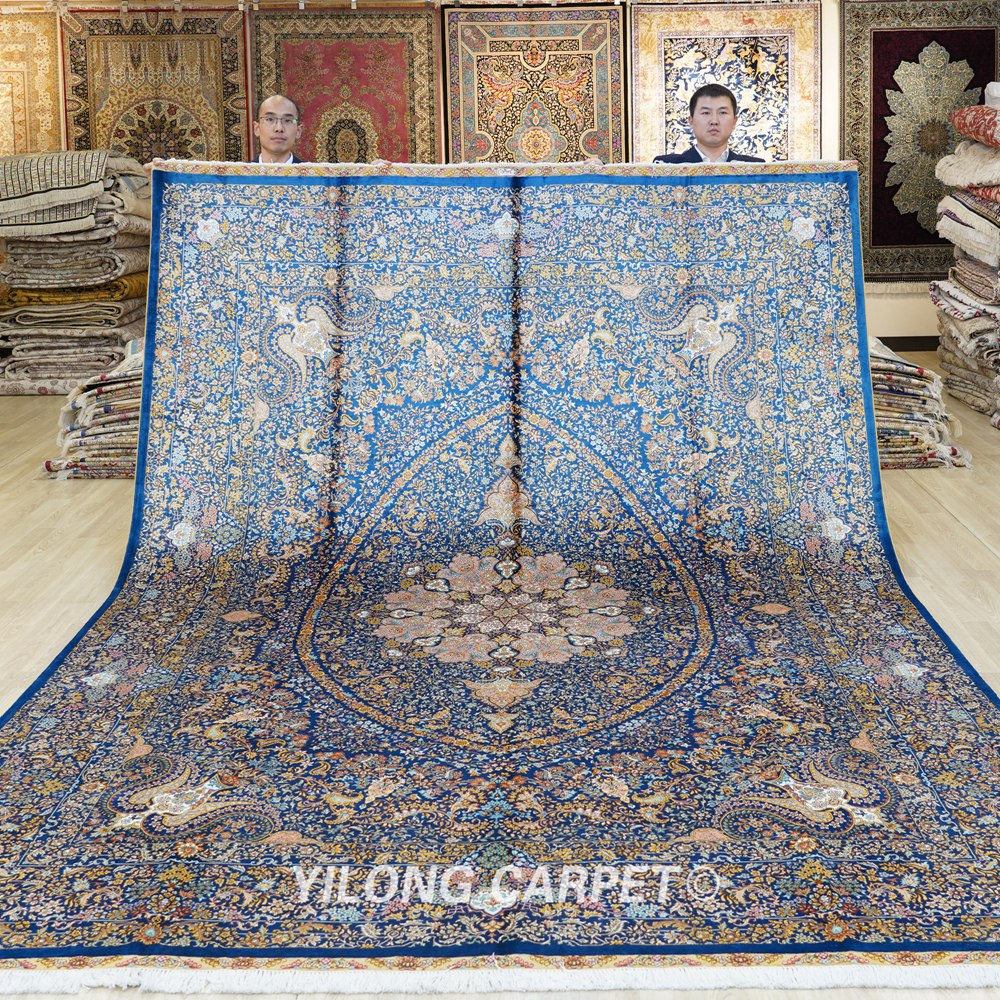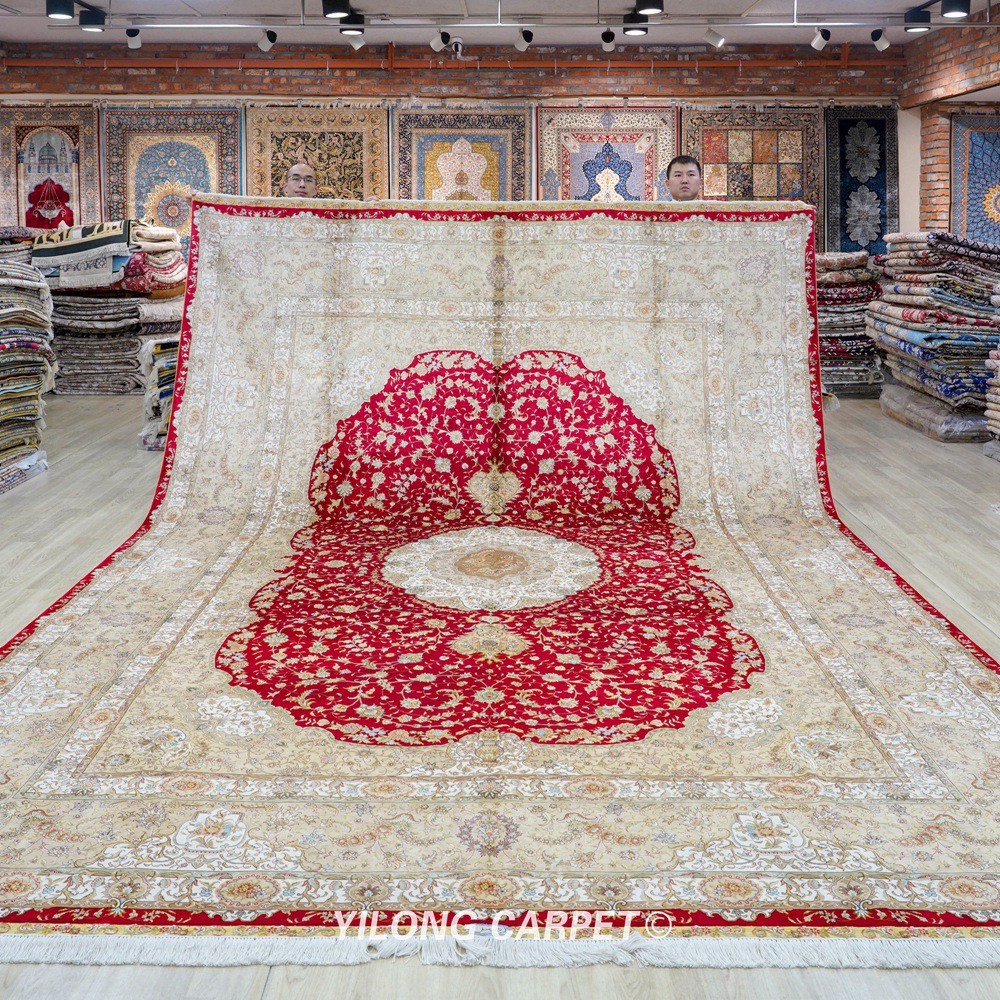1. Drafting
According to the patterns clients order, or the popular patterns designed depending on the popularity of the market, the cartographers make drawings, print, and grade. After the drawing is finished, the weavers will weave carefully according to the drawing. Even a tiny bit of weave can’t be wrong. After finishing weaving, the carpet must be as perfect and vivid as the drawing.
2. Fixing the warp
Fixing the warp and marking the scale according to different lines at the unit of feet is the first step of weaving the carpets. Its quality is related to the shape and quality of a carpet directly. It usually needs the exquisite skills of craftsmen. They should ensure the force and thickness are average and balanced.
3. Hand-knotting
Hand-knotting is an ancient weaving way. For the scene the drawing show, the craftsmen hold the colored string in the left hand and take a knife in the right hand, knot back and forth, moves the rime, pat it, and then cut the string, leaving 1.5 cm long left. The pile of carpets should be neat and smooth. The fringes should be straight. This double-knotting way present the well-designed pattern vividly. Every square foot carpet costs 220g-250g with colored strings. A craftsman will spend 14-20 months weaving a 300-lined 5ft×8ft carpet. Weaving an 800-lined 1.4ft×2ft will cost a craftsman 40-50 months. Using silk as thin as a hair, wearing the magnifying lens, and spending years, girls’ eyesight is impaired after weaving a 1000-lined carpet and never capable of making the second one. The weaving process of high-lined carpets is painstaking. The carpets of high quality are valuable. Many people bought them for collections or heirlooms. Hence the name “soft gold”.
4. Sniffing
After a new carpet is finished, it will be cut down from the rack and ready for straight sniffing. The sniffing workers are required to have exquisite sniffing skills. They use sniffing machines to sniff the surface of carpets repeatedly to ensure the surface of carpets is smooth, neat, and comfortable.
5. Washing-Natural withering
Using modern washing technologies, the dirt and remaining silk in the carpet are totally washed. Then put the carpets outside on shelves to have a natural withering without sunburn. The carpets will be taken outside until they are totally dry.
6. Weaving fringes
And then, the craftsman will examine and fix the flaws of the whole carpet. Finally, they begin to weave the fringes. Craftsmen will choose different fringe styles according to density, color, and size, ensuring the chosen fringe style is the most suitable one for the body. After this process, a beautiful handmade silk carpet has been weaved.
7. Ironing
Ironing is the last process of manufacturing. The ironing workers take off their shoes, bend their knees on the carpet, hold two electric irons, examining every plicated place and ironing. It’s required that the temperature of the iron is just suitable for the carpet. After the ironing, a perfect carpet is totally finished.
After the end of all processes, every carpet also needs to pass the examination that it satisfies all the requirements of the drawing. After being verified by the technical people of our factory and appraised by the Light Industry Department, our products can circulate in the market.

